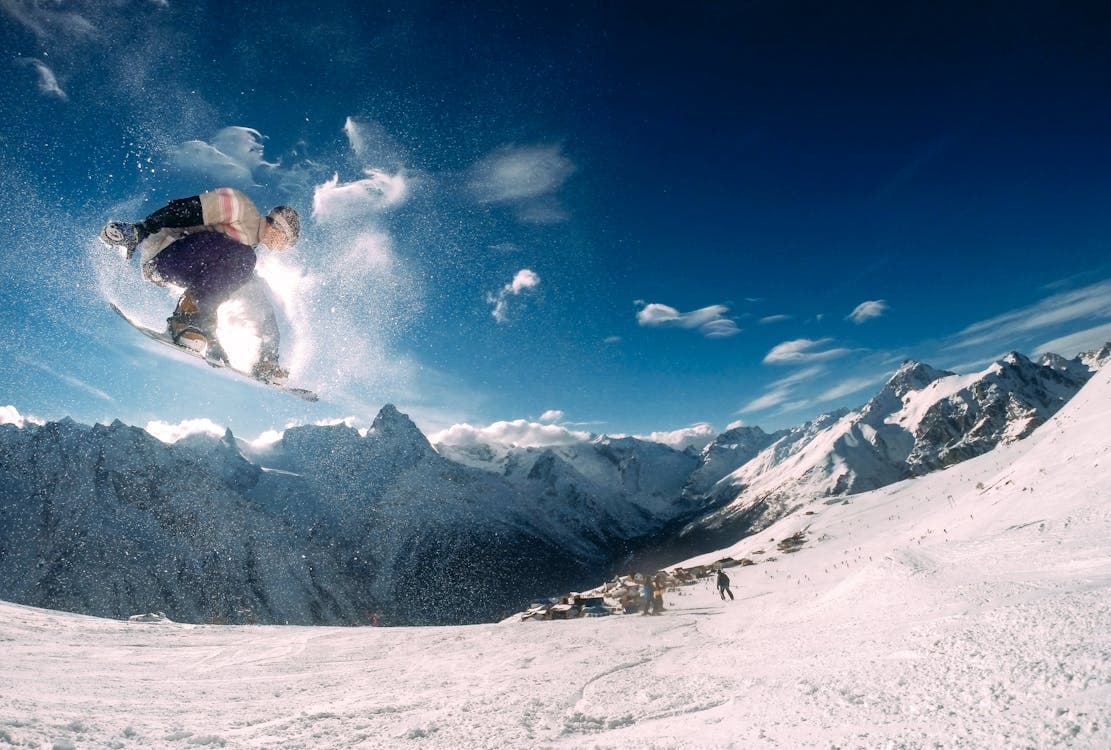Snowboarding – the Olympic winter sport, the essence of which is to descend from the snowy slopes or mountains on a special board – a snowboard.
History of snowboarding
Snowboarding is considered a young sport, it is not yet a hundred years old. Invented it in the 60’s by American Sherman Poppen, a prototype of the modern snowboard was made from two glued skis. Poppen named his invention “snurfer” (from the English word made up of two others – snow and surf). There were no bindings on the board, and the rider had to hold on to a special rope, tied to the nose of the projectile. The resulting sport began to rapidly gain popularity.
Dimitri Milovich, Jake Burton (founder of Burton Snowboards), Tom Sims (Sims Snowboards), Mike Olson (Mervin Manufacturing) had a great influence on its development. In 1979, the first World Surfing Championship was held. One of the competitors in this event was Jake Burton, who made some improvements to his board by adding bindings to it. Due to the fact that Burton’s gear was different from the rest, he had to compete separately from all the other riders. Being the only competitor, he easily won the contest.
In 1982, the first U.S. national slalom competition was held at Suiside Six.
In 1983, the first World Halfpipe Championship was held in Soda Springs, California. In 1988, the first World Snowboarding Championship was held, and in 1998 snowboarding was recognized as an Olympic sport. Today the Olympic program includes three snowboarding disciplines: giant slalom, boardercross and halfpipe.
Disciplines in snowboarding
Let’s look at the main disciplines (types) of snowboarding.
Parallel slalom – was an Olympic discipline until 2014 (eliminated in 2015). Two athletes descend on parallel tracks with flags of blue and red colors set on them. The athlete who completed the course faster wins.
Giant slalom is an Olympic discipline since 2002. The snowboarder must overcome the course marked with a gate for the shortest possible time. Snowboard cross – Olympic discipline since 2006. The snowboarder must descend a long gentle and wide track on which there are various obstacles (relief figures, jumps). Halfpipe – Olympic discipline since 1998. Snowboarder must perform various tricks on a snowboard while flying out of the vertical part of the half-pipe (structure similar to the half pipe). Slopestyle is an Olympic discipline since 2014. Snowboarder must pass the track with a lot of shells to perform acrobatic tricks. Big Air – included in the Olympic program in 2018. A long and protracted jump off the ramp, during which the snowboarder performs some kind of trick. Quarterpipe – skiing on a ramp that looks like one, but larger, half of a halfpipe. Jibbing – snowboarding in specially equipped parks. Trends in snowboarding Freestyle – a direction of snowboarding, which includes the following techniques: jumps on trampolines, skating using various structures, tricks on the surface of the slopes, overcoming obstacles. Freestyle is used in snowboard cross, halfpipe, slopestyle, big-air and jibbing.
Freeride – a direction of snowboarding that involves free riding, not limited to prepared slopes or parks, without rigidly defined routes, goals or rules.
Hard snowboarding – a trend that is based on technical downhill skiing.


